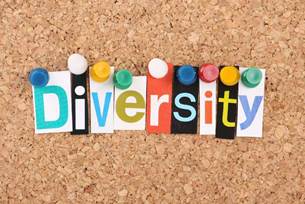I have been in the diversity training field for nearly 20 years and everybody talks about best practices but I feel too many of my colleagues really make it more complicated than it really needs to be and here at DTG we have always tried to make diversity issues and the related training more easy to comprehend and embrace. The prerequisite reading for this article is an article I recently wrote entitled – “Diversity Worst Practices.” Another article that would be helpful to read is our article on our website diversitydtg.com about ineffective or bad diversity training – what I like to call “Blame and Shame” diversity training and please find the related article on what exactly is the definition of a diversity issue.
Now, we are ready to discuss best practices. These are proven practices executed in hundreds of organizations with tens of thousands of workshop participants over the past nearly 20 years of my career. Remember I do a fair amount of rescue diversity training where I am brought in after another diversity trainer blew the place apart. What I have learned about making diversity-training stick follows. My top 11 list coming at you!
Your Diversity Training Workshop….
1. …comes with an actual workbook. I have seen workshops lead by other diversity
trainers and they don’t have a workbook! “Everything was free form and we used easel paper and the wall.” Are you kidding me? What will people remember, what will they retain and can they remember the skills and tools (diversity tool kit) from the training?
2. …includes predetermined training objectives. I have seen workshops with no clear objectives or goals. This is embarrassing.
3. …is built around objectives that came from some kind of a prior training needs analysis. You talked to your target audience and identified issues and what they wanted in the upcoming training. Maybe you had a focus group or you did a quick survey. Whenever a client approaches us to do training I always ask them how they determined their training and education needs. Please don’t tell me “we have a gut feeling about this.” Usually something happened – a “moment of truth.” Hey, whatever works but I would much prefer to be proactive and not reactive (also much cheaper).
4. …is linked to your organization’s mission and core values. “Well, we don’t have a mission or core values.” What? We call this anarchy. Every organization needs a well-defined mission, vision, and some kind of core values, guiding principles, code of conduct – guides employee behavior, respect and treatment in the workplace.
5. …reflects an acknowledgement by firm leadership that “status quo” is not working. With the workplace (labor force) and marketplace (client force) changing – doing the same things we have always done and expecting better results is organizational suicide!!!
6. …implies a bias for action. That we want to deal with the diversity-related conflict head on and not pretend like it does not exist and hope that it goes away by itself. Madness.
7. …is part of a much bigger organization-wide diversity strategy and plan to make the organization more inclusive, more open, and more welcoming to talent from all walks of life, all backgrounds, perspectives and upbringings? The most progressive organizations are reviewing all of their policies, procedures, and business practices to ensure they are more inclusive and not unintentionally exclusionary.
8. …is an acknowledgement that we have not been preparing our supervisors and managers to do their job. How many times do I see organizations promote people into supervisory and managerial roles without screening them or developing them – they don’t have the competencies, skills and traits that will ensure their success? Remember, most people can barely manage people like themselves let alone people that are different.
9. …includes skills, tools, tips and techniques for dealing with diversity issues, conflict and diversity related problems. The best diversity training programs are skill based and knowledge based (applying your new diversity skills and tools). Please don’t roll out awareness only diversity training and expect results, behavioral change or any kind of long term impact on your organization. Build your diversity tool kit for your employees and supervisors and they will come. I have been including as of late a “toxic employee module” as well.
10. …is linked to your annual performance appraisal process. Being an inclusive supervisor or manager that not only acknowledges the diversity of his or her team but values this diversity must be included in your performance appraisal process as a critical competency. Behaviorally, is my manager fair, balanced, and inclusive? Is my manager approachable when it comes to employee relation issues? Does my manager mentor me?
11. …has messages that are also woven into your new hire orientation, your supervisory, managerial and executive development curricula. Diversity is not a stand alone or set aside endeavor but is a part of the very fabric of your organization.
- 2024 Trends, Predictions, Actions We Must Take – by Mauricio Velásquez. - February 4, 2024
- Eyes and Ears Wide Shut – by Mauricio Velásquez - June 16, 2020
- Diversity Mission: Minority Legal Firm Incubator – By Mauricio Velásquez - November 25, 2019

